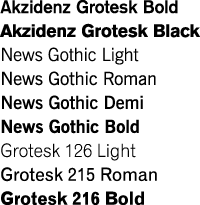Zhurnaljnaya Rublenaya Shrift

Bust of Sankrityayan in Born Azamgarh Uttar Pradesh 1893 4 9}},, Died 14 April 1963 (1963-04-14) (aged 70),, Occupation Writer, essayist, scholar, sociology, indian nationalist, history,, philosophy,,,,, Textual Editing,, Science, drama, Politics,, Nationality Indian Notable awards 1958: 1963: Rahul Sankrityayan (9 April 1893 – 14 April 1963), is called the Father of Hindi Travelogue. He is the one who played a pivotal role to give travelogue a 'literature form', was one of the most widely travelled scholars of, spending forty-five years of his life on travels away from his home. He travelled to many places and wrote many travelogue approximately in the same ratio. He is also famously known for his authentic description about his travels experiences, for instance- in his travelogue 'Meri Laddakh Yatra' he presents overall regional, historical and cultural specificity of that region judiciously. He became a Buddhist monk ( Bauddha ) and eventually took up. Sankrityayan was also an Indian nationalist, having been arrested and jailed for three years for creating anti-British writings and speeches.
The latest Tweets from Ruhi (@r_uhi). Med student also politics. This page covers type design in Russia / the Soviet Union / the old USSR. Russian designer of Rublenaya Shadow (1957).
He is referred to as the 'Greatest Scholar' ( Mahapandit) for his scholarship. He was both a as well as a. The Government of India awarded him the civilian honour of the in 1963. Contents • • • • • • • • • • • • • • • • • Childhood [ ] He was born as Kedarnath Pandey in a poor family on 9 April 1893 in Pandha Village and his ancestral village is Kanila Chakarpanur village, district, in Eastern. Free gerber accumark v8 crack. He received formal schooling at a local primary school, though he later studied and mastered numerous languages independently, as well as the art of photography.
Philosophy of his Life [ ] In his initial days he was a keen follower of of Swami. Buddhism came to him and changed his life. He lost faith in God's existence but still retained faith in reincarnation. Later he moved towards Marxist Socialism and rejected the concepts of reincarnation and afterlife also.
The two volumes of Darshan-Digdarshan, the collected history of World's Philosophy give an indication of his philosophy when we find the second volume much dedicated to 's. This he discovered in Tibetan translation from Tibet. Travels [ ] Sankrityayan's travels took him to different parts of India including,,. He also travelled to several other countries including,,,, China, and the former. He spent several years in the 'Parsa Gadh' village in the in. The village's entry gate is named 'Rahul Gate'.
While travelling, he mostly used surface transport, and he went to certain countries clandestinely; he entered Tibet as a. He made several trips to Tibet and brought valuable paintings and and back to India. Most of these were a part of the libraries of and Universities. These objects had been taken to Tibet by fleeing during the twelfth and subsequent centuries when the invading Muslim armies had destroyed universities in India.
Some accounts state that Rahul Sankrityayan employed twenty-two mules to bring these materials from Tibet to India.,, has a special section of these materials in his honour, where a number of these and other items have been displayed. Books [ ] Sankrityayan was a, well versed in several and, including,,,,,,,,,,, French and Russian. He was also an, a theoretician, and a creative writer. He started writing during his twenties and his works, totalling well over 100, covered a variety of subjects, including sociology, history, philosophy,,,,, textual editing,, science, drama, and politics. Many of these were unpublished.
He translated from into. Rahul's Tombstone at.This tombstone is established at a place called 'Murda Haati' which is a cremation ground downtown in the lower altitudes of Darjeeling around 25 minutes drive from the ChowRasta.The same place also has the tombstone of. One of his most famous books in Hindi is ( A journey from the to the ) – a work of historical fiction concerning the migration of from the of the to regions around the; then their movements across the and the and the sub-Himalayan regions; and their spread to the of the. The book begins in 6000 BC and ends in 1942, the year when, the Indian nationalist leader called for the. It was published in 1942.
A translation into English of this work by Victor Kiernan was published in 1947 as From Volga to Ganga. It was translated by K.N. Muthiya-Tamilputhakalayam in as Valgavil irundu gangai varai and is still considered a best-seller.
We have already set up the product for you for best performance and results. • The product ignores file system, scans disk at physical level. You do not need to change a lot of complicated and unnecessary settings. It can be used with FAT, NTFS or any other file system, and also with unformatted or unpartitioned disks. Hdd regenerator klyuch 2011.
The Kannada translation done by B.N Sharma as 'Volga Ganga'. The Telugu translation (Volga nunchi Ganga ku) inspired many readers. Volga muthal Ganga vare, the Malayalam translation, became immensely popular among the young intellectuals of Kerala and it continues to be one of the most influential books of its times.